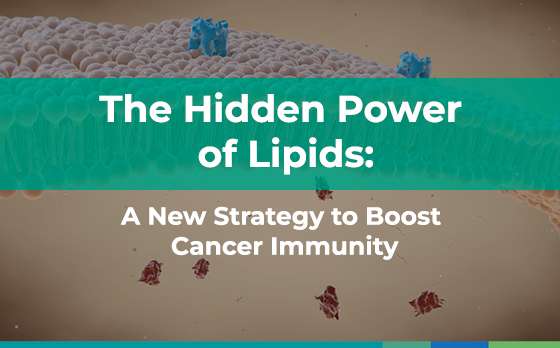Cancer not only affects the cells it comprises but also transforms the surrounding environment, known as the tumor microenvironment (TME). This hostile space not only facilitates tumor growth but also weakens the immune system’s response, particularly that of CD8+ T cells, which are key players in destroying cancer cells.
A recent study conducted by Ping and collaborators from Zhengzhou University in China, published in the journal Immunity, explores how changes in lipid metabolism, driven by the reduction of an enzyme called PLPP1, impact the function of these immune cells. CD8+ T cells are fundamental in the fight against cancer, acting as the “elite soldiers” of the immune system by identifying and eliminating malignant cells.
However, within the tumor microenvironment, these cells face obstacles that weaken and limit their ability to effectively combat cancer.
To conduct the research, samples of T cells were taken from lung cancer patients, both from peripheral blood and within the tumors. Their phospholipid components were analyzed using advanced technologies such as mass spectrometry. The researchers also worked with genetically modified mice to deactivate a key enzyme, Phospholipid Phosphatase 1 (PLPP1), which is responsible for synthesizing phospholipids like phosphatidylcholine (PC) and phosphatidylethanolamine (PE). These molecules are essential for maintaining cellular structure and functionality. This allowed the researchers to observe how the absence of this enzyme affects tumor growth and the ability of immune cells to function properly.
The researchers found significant metabolic alterations in intratumoral T cells. On one hand, CD8+ T cells exhibited significantly lower levels of phosphatidylcholine (PC) and phosphatidylethanolamine (PE). Moreover, PLPP1 showed reduced expression in T cells located within the tumor compared to those circulating in the bloodstream. This reduction impairs their cytotoxic capacity and survival by triggering a process called ferroptosis, a type of cell death characterized by excessive oxidative stress and the accumulation of peroxidized lipids. Tumors tend to accumulate high levels of unsaturated fatty acids, which are particularly prone to peroxidation. In the absence of sufficient levels of PLPP1, these molecules promote ferroptosis in T cells, further intensifying their functional exhaustion.

Figure 1. Influence of PD-1/PD-L1 interaction on the inhibition of Phospholipid Phosphatase 1 (PLPP1) expression in CD8+ T cells. Reducing PLPP1 levels consequently reduces the presence of Phosphatidylcholine and phosphatidylethanolamine in cell membranes, causing increased susceptibility to oxidative stress damage and subsequent ferroptosis.
PD-1: The Molecular Brake and Its Impact on PLPP1
A key element of this study is PD-1 signaling, a protein that acts as a “molecular brake” in CD8+ T cells, reducing their ability to attack cancer cells by suppressing their activity and altering their metabolism. Tumor cells exploit this mechanism by producing PD-L1, which activates PD-1 and suppresses key genes like PLPP1 through a signaling cascade involving the proteins Akt and GATA1.
The study showed that PD-1 blockers not only reactivate T cells but also increase PLPP1 levels, improving the cells’ resistance and ability to combat tumors. However, the researchers also found that the effectiveness of this approach depends on the T cells not being too damaged from the outset.
Therapeutic Implications
This discovery has significant implications for designing new cancer strategies. Increasing PLPP1 expression could reduce ferroptosis and restore the functionality of T cells within tumors. Additionally, understanding how unsaturated fatty acids influence the tumor microenvironment could open new pathways for metabolic treatments.
Main Reference:
Ping, Y., Shan, J., Qin, H., Li, F., Qu, J., Guo, R., Han, D., Jing, W., Liu, Y., Liu, J., Liu, Z., Li, J., Yue, D., Wang, F., Wang, L., Zhang, B., Huang, B., & Zhang, Y. (2024). PD-1 signaling limits expression of phospholipid phosphatase 1 and promotes intratumoral CD8+ T cell ferroptosis. Immunity, 57(9), 2122–2139.e9. https://doi.org/10.1016/j.immuni.2024.08.003
Other References:
Lim, S.A., Su, W., Chapman, N.M., and Chi, H. (2022). Lipid metabolism in T cell signaling and function. Nat. Chem. Biol. 18, 470–481. https://doi.org/10.1038/s41589-022-01017-3.
Wang, R., Liu, Z., Fan, Z., and Zhan, H. (2023). Lipid metabolism reprogramming of CD8+ T cell and therapeutic implications in cancer. Cancer Lett. 567, 216267. https://doi.org/10.1016/j.canlet.2023.216267.
Edwards-Hicks, J., Apostolova, P., Buescher, J.M., Maib, H., Stanczak, M.A., Corrado, M., Klein Geltink, R.I., Maccari, M.E., Villa, M., Carrizo, G.E., et al. (2023). Phosphoinositide acyl chain saturation drives CD8+ effector T cell signaling and function. Nat. Immunol. 24, 516–530. https://doi.org/10.1038/s41590-023-01419-y.
Yang, W., Bai, Y., Xiong, Y., Zhang, J., Chen, S., Zheng, X., Meng, X., Li, L., Wang, J., Xu, C., et al. (2016). Potentiating the antitumour response of CD8(+) T cells by modulating cholesterol metabolism. Nature 531, 651–655. https://doi.org/10.1038/nature17412.


